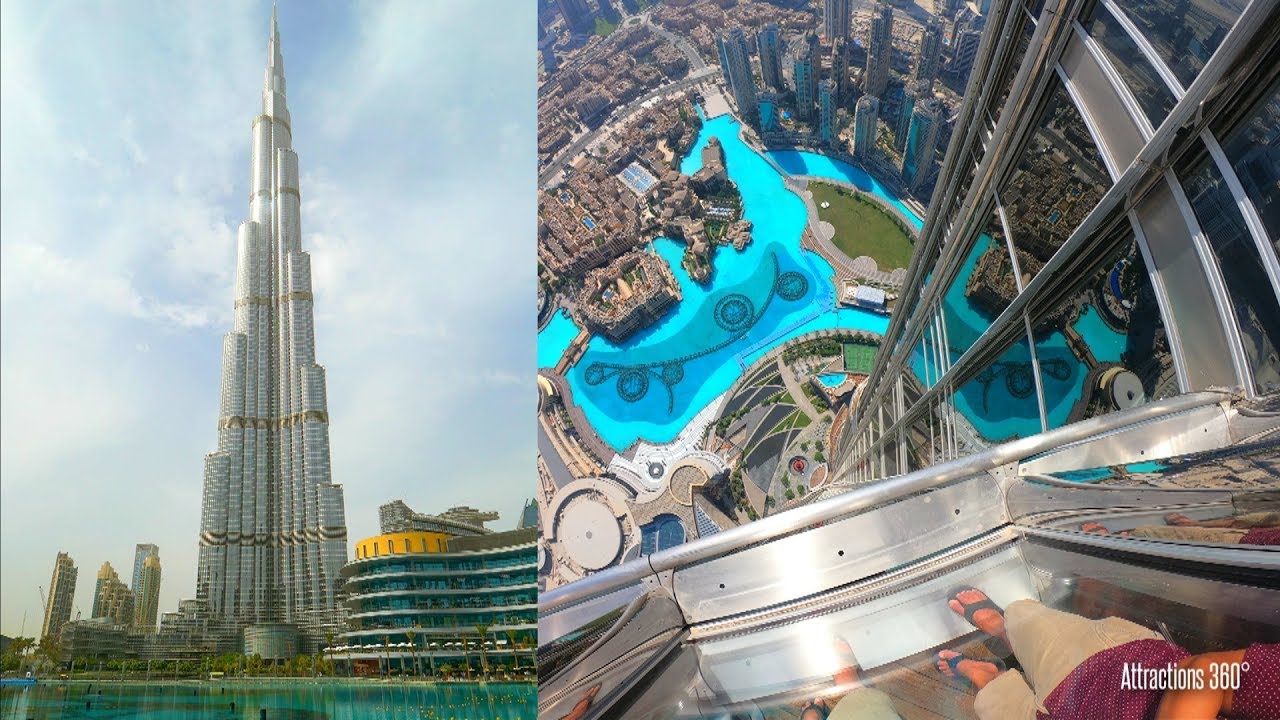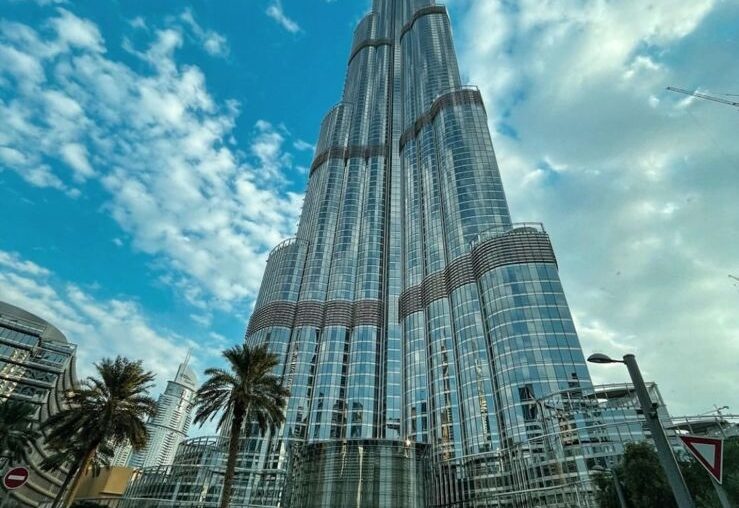
Dubai’s Burj Khalifa: A Towering Icon of Ambition and Innovation
Standing tall in the heart of Dubai, the Burj Khalifa is more than just a skyscraper; it’s a monument to human ambition, a testament to architectural innovation, and an undeniable icon of the modern world. Since its inauguration in 2010, the world’s tallest building has captivated the imaginations of millions, drawing visitors from far and wide to marvel at its sheer scale and breathtaking views. But what exactly makes the Burj Khalifa so special? Let’s delve into the story behind this towering marvel and uncover everything you need to know about this extraordinary feat of engineering.
A Journey to the Top: The Burj Khalifa’s Construction
The idea for a supertall building in Dubai was born in the early 2000s, as the city envisioned itself as a global hub for tourism and business. The project was envisioned as a testament to Dubai’s ambition and a symbol of its rapidly evolving landscape. Construction commenced in 2004 under the watchful eyes of the renowned architect Adrian Smith, then of Skidmore, Owings & Merrill (SOM).
The building process involved a complex and meticulous approach, employing cutting-edge construction techniques and materials. The core of the Burj Khalifa was built using high-strength concrete, while the exterior was clad in pre-cast concrete panels, engineered to withstand the harsh desert climate. To handle the immense weight and wind loads, the building was designed with a unique Y-shaped structure, providing stability and minimizing sway.
More Than Just Height: Architectural Innovation and Sustainability
Beyond its record-breaking height, the Burj Khalifa is a masterpiece of architectural ingenuity. Its Y-shaped plan provides structural support and maximizes floor space, while the building’s tapered design helps reduce wind loads and enhance energy efficiency.
Sustainability was a key consideration in the design. The building features an intelligent building management system, which optimizes energy consumption and resource usage. Solar panels on the roof contribute to the building’s energy generation, further reducing its environmental impact.
An Enchanting Experience: Exploring the Burj Khalifa
A visit to the Burj Khalifa is an unforgettable experience. Stepping inside, you’ll be greeted by a luxurious and modern interior, with sleek finishes and state-of-the-art amenities.
The main attraction is, of course, the observation decks. Located on the 124th, 125th, and 148th floors, these decks offer unparalleled panoramic views of Dubai and the surrounding desert. The observation decks are equipped with high-powered telescopes and interactive displays, offering a unique insight into the city’s history and development.
More Than Just a Tower: The Burj Khalifa’s Cultural Impact
The Burj Khalifa has become a symbol of Dubai’s aspirations and a source of national pride. It has played a significant role in promoting tourism and investment in the region. The building has also inspired countless works of art, literature, and film, solidifying its status as a cultural icon.
A Glimpse into the Future: The Burj Khalifa’s Legacy
The Burj Khalifa has redefined the boundaries of architectural possibility and continues to inspire awe and wonder. Its unique design, innovative construction, and impressive sustainability features have set a new benchmark for future skyscrapers. The building’s enduring popularity and its impact on the global landscape ensure that the Burj Khalifa will continue to be a symbol of ambition and innovation for generations to come.
Tips for Visiting the Burj Khalifa:
- Book your tickets in advance: The Burj Khalifa is a popular tourist destination, so booking your tickets online beforehand is highly recommended.
- Go early in the morning or late in the evening: The crowds tend to be smaller during these times, allowing for a more enjoyable experience.
- Bring a camera: The views from the observation decks are breathtaking and perfect for capturing unforgettable memories.
- Dress comfortably: The temperature inside the building is climate-controlled, but you may want to dress in layers as the weather can be unpredictable.
- Be prepared for security checks: Like most major landmarks, the Burj Khalifa has strict security measures in place. Be prepared to pass through security checks and potentially have your bags inspected.
Visiting the Burj Khalifa is an experience that will stay with you long after you’ve left. This towering symbol of human achievement offers a unique perspective on the modern world and a glimpse into the future of urban design.

Here’s more about the topic discussed above:
Dubai’s Burj Khalifa: A Symphony of Architecture, Ambition, and Wonder
Standing tall as a beacon of human ingenuity and ambition, Dubai’s Burj Khalifa is more than just a building; it’s a testament to the city’s unwavering spirit, a symbol of its modern identity, and a wonder of the world. This architectural masterpiece, rising 828 meters (2,717 feet) into the azure sky, has captured the imagination of millions, forever changing the skyline of Dubai and etching itself into the annals of architectural history.
From Concept to Construction: A Journey of Engineering Brilliance
The story of the Burj Khalifa begins with the vision of Sheikh Mohammed bin Rashid Al Maktoum, the visionary ruler of Dubai. His dream was to create a landmark that would not only redefine Dubai’s architectural landscape but also establish it as a global hub for tourism, business, and investment. This vision led to the conception of the Burj Dubai, as it was initially known, which was designed by renowned architect Adrian Smith of Skidmore, Owings & Merrill (SOM).
The construction of the Burj Khalifa, which began in 2004, was a feat of engineering unlike any other. The building’s unique “Y” shape, inspired by the Hymenocallis flower, was strategically designed to enhance stability and minimize wind load. The core of the building was constructed using reinforced concrete, while the exterior was clad in a shimmering glass facade that reflects the changing colors of the sky.
The project presented numerous challenges, requiring innovative solutions and pushing the boundaries of construction technology. For example, the building’s height posed a significant challenge, as the construction team had to overcome the limitations of traditional construction equipment. This led to the development of specialized cranes and custom-built scaffolding systems that could reach such dizzying heights.
A City Within a City: Exploring the Burj Khalifa’s Interiors
The Burj Khalifa is not just a tower, but a self-contained city with a vibrant mix of residential, commercial, and entertainment spaces. The lower floors house luxury residences, while the upper floors are occupied by offices and hotels, including the iconic Armani Hotel Dubai.
The building features a range of amenities designed to cater to the diverse needs of its residents and visitors. These include:
- At the Top, Burj Khalifa: This observation deck, located on the 124th and 125th floor, offers breathtaking 360-degree panoramic views of the city and the surrounding desert. It’s a must-visit for any tourist seeking a unique perspective of Dubai’s grandeur.
- The Dubai Mall: Located at the base of the Burj Khalifa, this massive shopping mall is home to over 1,200 stores, restaurants, and entertainment venues. It’s a world of luxury shopping and dining, making it one of the most visited destinations in Dubai.
- The Dubai Fountain: A spectacular choreographed water and light show set against the backdrop of the Burj Khalifa, this mesmerizing performance is a must-see for any visitor. The dancing fountains and vibrant lights synchronized to music create an unforgettable spectacle.
Beyond Architecture: Symbolism and Legacy
Beyond its architectural grandeur, the Burj Khalifa embodies Dubai’s ambitions, signifying its emergence as a global leader in innovation, sustainability, and economic development. The building’s name itself is a tribute to the UAE’s founding father, Sheikh Zayed bin Sultan Al Nahyan, and a testament to the strong leadership that has guided Dubai’s phenomenal growth.
The Burj Khalifa has also become a symbol of hope and resilience, inspiring people around the world with its message of achievement and unwavering determination. Its construction, undertaken during a period of economic uncertainty, proved to the world that Dubai was undeterred in its pursuit of progress.
The Burj Khalifa: A Timeless Icon
Standing tall as a testament to human ingenuity and ambition, Dubai’s Burj Khalifa continues to captivate imaginations, inspiring awe and wonder in everyone who beholds it. It is a testament to the power of dreams and the human spirit’s ability to push the boundaries of what’s possible.
As the world continues to marvel at this architectural marvel, the Burj Khalifa remains a timeless icon, not only of Dubai, but of the human capacity for innovation and achievement. Its enduring legacy will continue to inspire generations to come, reminding us of the power of ambition, the beauty of innovation, and the awe-inspiring potential of human ingenuity.


